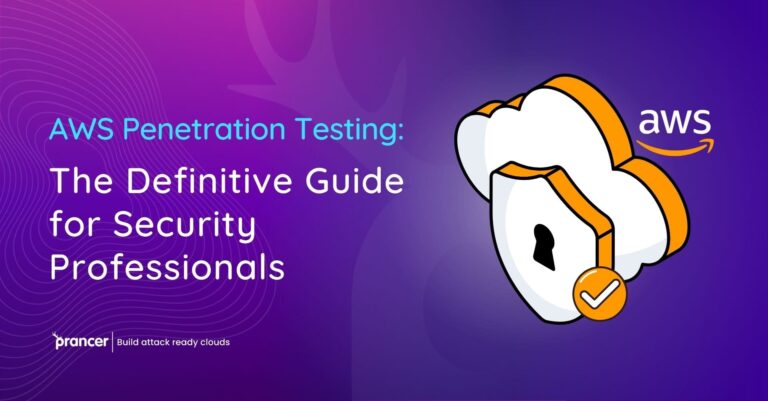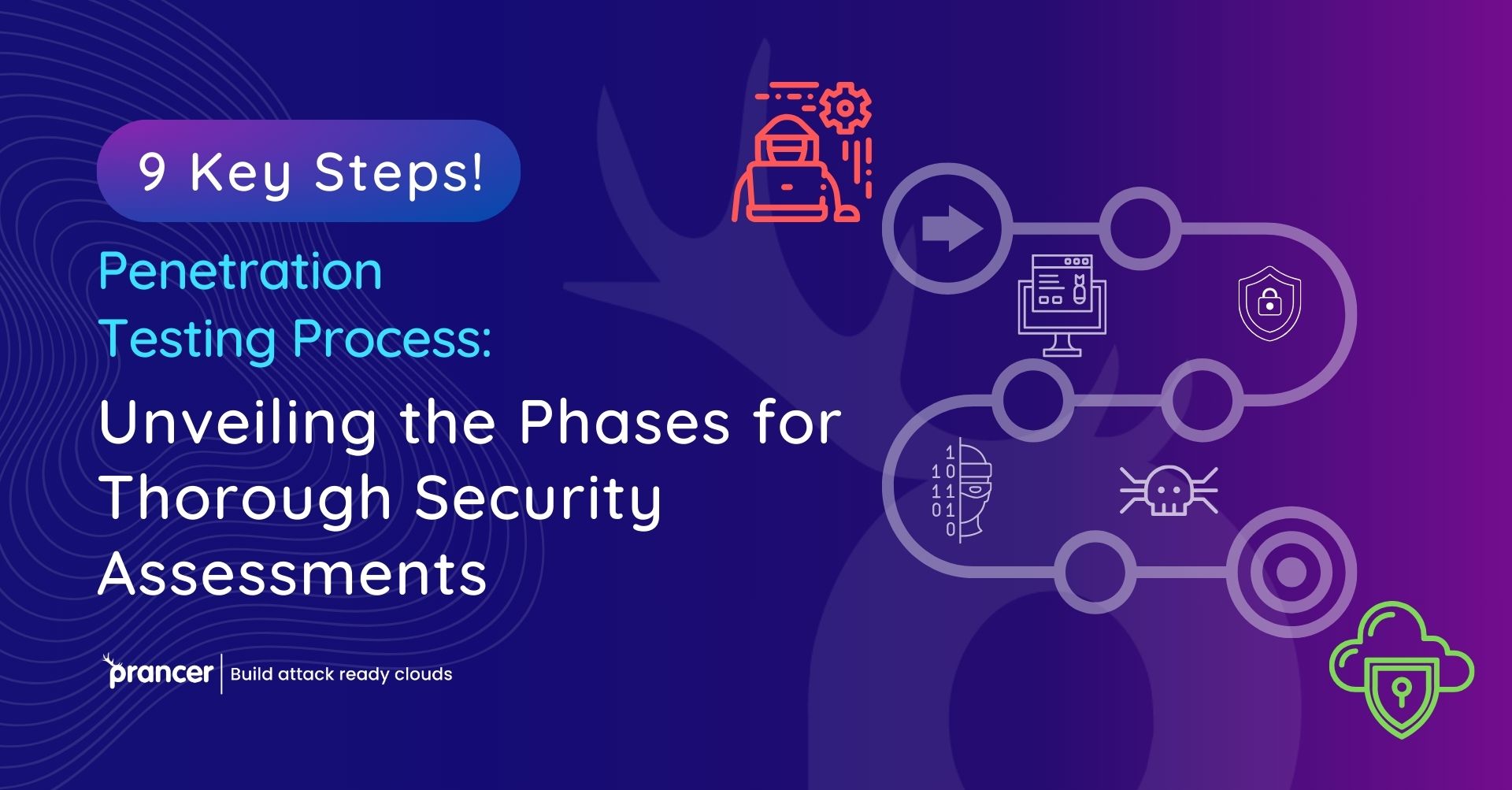

Cybersecurity demands proactivity, and at the heart of it lies the penetration testing process. By emulating potential cyberattacks, organizations can determine existing vulnerabilities and strengthen their defenses. This article dives deep into the penetration testing process, outlining the stages encompassing the penetration testing life cycle. Herein, we’ll also accentuate Prancer’s pivotal role and emphasize the undeniable advantages of automated penetration testing.
Every penetration testing process commences with scoping. Outline your test’s goals, constraints, and objectives. Prancer stands out in this phase by offering modules tailor-made to mirror an organization’s distinct needs.
In-depth data collection is pivotal to comprehend the targeted environment fully. With Prancer’s automated penetration testing process capabilities, deriving insights into potential vulnerabilities becomes significantly streamlined.
Actively probing the target system to identify vulnerabilities is key. Prancer’s automated tools, simulating real-time attacker maneuvers, ensure a thorough and detailed assessment during this phase.
Diligently analyze and assess the identified vulnerabilities. With Prancer, the chances of encountering false positives diminish, ensuring the results are both precise and dependable.
The actual act of exploiting discerned vulnerabilities showcases their potential implications. Prancer propels the penetration testing process here by rendering pre-set testing scenarios.
Delving into a breached system can offer insights into additional exploitable points and potential subsequent breaches. With Prancer’s tools, understanding the magnitude of a potential breach becomes more lucid.
Meticulous compilation of the findings into a cohesive report is essential. Prancer simplifies this aspect of the penetration testing process with its adept reporting tools, facilitating constructive stakeholder discussions.
The most crucial step post-identification is remediation. The role of Prancer is indispensable here, aiding in verifying the remediation measures’ effectiveness.
Post remediation, re-testing to confirm the vulnerabilities have been rectified is a must. Prancer’s automated penetration testing process functionalities make this a hassle-free process, adapting to potential evolving threats.
Incorporating Prancer into the penetration testing process is a strategic advantage. Some of its standout contributions include:
Testing with a computer to break in is an important measure that can toughen up a company’s online protection. Prancer improves the dependability and ability to adapt when testing through its use of automation. Adding Prancer to the task of finding weak spots, not only makes risk spotting faster but also ensures that defense plans stay strong against always changing internet dangers. This also has an easy-to-use design that can be used by people from experts in cybersecurity to newcomers. This makes it a big part of the tools box for internet safety keepers.
Nowadays, doing proactive security testing is very important for strengthening a company’s defenses against attacks on computers. Prancer’s automatic tools make this very important task better. It includes setting goals, collecting data efficiently, carefully checking the system, finding weaknesses accurately and evaluating exploits wisely. Prancer also helps in full reporting, good fixes and adjustable testing to deal with changing dangers. Prancer is very easy-to-use, accurate and can be used by experts or newbies. It’s a key part of protecting against cyber threats online.
Enhancing Cybersecurity with Automated Penetration Testing: The Role of Prancer
The Imperative of Proactive Cybersecurity:
In the world of cybersecurity, proactive has no compromises. The penetration testing process that replicates potential cyberattacks to identify vulnerabilities is the core of this proactive method. This thorough analysis addresses the penetration testing life cycle and highlights automated pen tes, especially by Prancer.
The Penetration Testing Process: Steps and Stages
Scoping:
Scope definition is the first stage of penetration testing journey.
In this stage, Prancer performs very well providing custom modules that meet the organization’s specific needs.
Information Gathering:
Deep data acquisition is critical for an accurate assessment of the target.
Prancer’s automated tools simplify the process of information gathering; this in turn makes it easier to identify potential vulnerabilities.
Enumeration:
In the reconnaissance phase, there is active interrogation of a target system to identify its vulnerabilities.
Prancer’s tools mimic real-time attacker behaviours to provide an in-depth and thorough analysis.
Vulnerability Analysis:
Detailed analysis of discovered vulnerabilities is essential.
More accurate and reliable results are made possible by a reduced risk of false positives for Prancer.
Exploitation:
Exploiting weaknesses demonstrates their ability to cause harm.
This phase becomes enhanced due to Pre-set tests scenarios of Prancer, where real life implications can be seen.
Post-Exploitation:
Investigating a hacked system is another way to uncover more entry points.
Prancer’s tools provide a more detailed understanding of the possible breaches and clarify their size.
Reporting:
It is essential to collate results into a cohesive report.
The reporting tools offered by Prancer makes it easy for the stakeholders to communicate their findings.
Remediation:
Post-identification, remediation is key.
Prancer helps to validate the success of remedial actions.
Re-Testing:
It is necessary to confirm the rectifications of vulnerabilities through retesting.
Re-testing is effective, thanks to the adaptive nature of Prancer’s functions based on emerging threats.
Prancer’s indispensable contributions to penetration testing.
Integrating Prancer into the penetration testing process offers strategic advantages:
Efficiency: Prancer speeds up several phases of penetration testing, improving thoroughness.
Accuracy: Its automatic tools greatly eliminate false positives that provide an accurate conclusion.
Versatility: As contemporary dangers evolve, the tests of Prancer are always kept up to date and provide complete assessments.
User-Friendly: Providing users with an accessible experience, Prancer targets experts and beginners alike.
Recent Practices in Cybersecurity and the Role of Prancer
Automated penetration testing tools are one of the critical measures to help companies strengthen their lines of defense online. The automation improves the trustworthiness and resilience of testing. Adding Prancer to vulnerability detection not just speeds up risk identification but also guarantees the strength of defenses against dynamic cyber threats. Its user friendliness is what makes the tool indispensable for all professionals, no matter how much they know about it.
Need for Preventative Security Testing
Ultimately, proactive security testing proves to be essential in modern times for strengthening defense of a company against cyber attacks. This crucial process is improved by the automated tools available in Prancer, which allow quick setting of goals; data collection; comprehensive system checks and reliable assessment of vulnerabilities and exploits. Secondly, Prancer helps with holistic reporting as well effective remediation and flexible testing to adapt to the evolving threats.
Prancer’s Pivotal Role in Cybersecurity:
Proactive cybersecurity is based on Prancer’s automated penetration testing tools. They simplify goal definition, data gathering, system measurement; vulnerability identification as well increase exploitation analysis. Prancer also makes reporting easier, allows for accurate remediation to be carried out and provides a flexible approach to re-testing. The user-friendly aspect, precision and flexibility of Prancer make it an integral part in defending against online cyber assaults.
To have strong online safety, a complete testing process for breaking into systems is necessary. Using Prancer’s automated testing helps to make the checks more accurate and thorough. In a world of computers where bad things happen online, Prancer gives companies what they need to prevent these problems. This helps make their protection better and keeps their computer systems safe from harm.
